Index
- Nvidia GTX 980 reviewed
- The GM204 GPU
- VXGI, dynamic global illumination technique
- MFAA, multi-frame sampled anti-aliasing
- DSR, dynamic super resolution
- A closer look at GTX 980
- Testbed
- 3DMark
- Sleeping Dogs
- Crysis 3
- Thief
- Battlefield 4
- BioShock
- Tomb Raider
- Far Cry 3
- Unigine Heaven
- Thermals and Noise
- Power Consumption
- Conclusion
- All Pages
In order to keep the temperatures at bay, Nvidia decided to use an existing cooler, which’s isn’t a bad thing. We already had a chance to get acquainted with the Nvidia Kepler reference cooler and we found it more than adequate. We last saw it the GTX 780 Ti, where it served the card very well indeed. The cooler was designed to provide superior cooling performance and generate very little noise in the process.
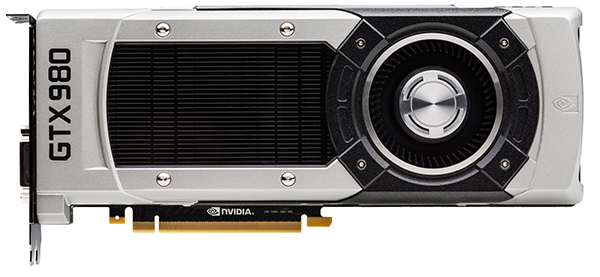
The cooler sports a silver aluminum casing for the cover and a polycarbonate window for show-offs. Through the window you see the heatsink. The card is 26.5cm long and it is 11cm tall and obviously it is a dual-slot design. On the upper side we see the GeForce GTX logo with LED backlighting, which was also used on the GTX 690, GTX 780, GTX 780 Ti and Titan.

A 6+6 pin power connection setup is used on the GTX 980 and GTX 970. The GTX 780 Ti and GTX 780 require a combination of 6+8 pin power connectors. The GTX 780, GTX 780 Ti and Titan have a TDP of 250W, compared to GTX 980 with a 165W TDP and GTX 970 with a 145W TDP.
The fan management is very good, so the 75mm fan seems rather docile and won’t surprise you with sudden rpm changes. Nvidia’s Boost technology takes care of fan management quite well. The GPU temperature threshold is set at 80 degrees Celsius and the card overclocks automatically until the temperature reaches the threshold, provided the load and power consumption readings are not already maxed out.
During auto-overclocking the temperature could be kept within the 80C envelope by accelerating the fan, but Nvidia wanted to keep things quiet, so Boost 2.0 tends to reduce the GPU Boost clock instead of speeding up the fan. Users who place an emphasis on low noise should like this approach, but those who want more performance can always play around with the settings.
The secret to good cooling is a good vapor chamber design, which also allows engineers to come up with compact yet powerful heatsinks that don’t too many expensive and bulky heaptipes.
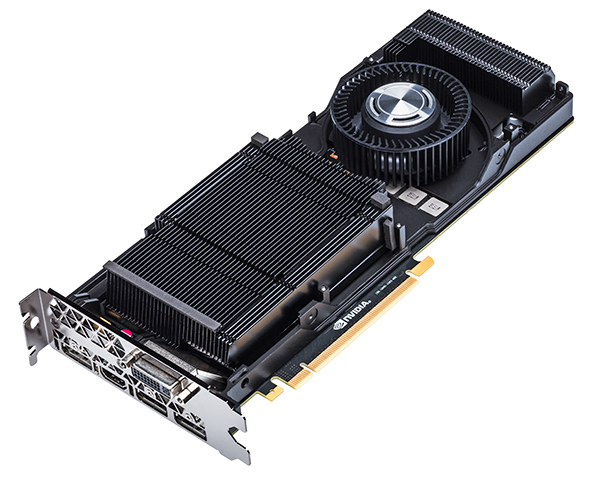
Three heatpipes are embedded in the base of the heatsink and they transfer heat from the GPU to the fins. Nvidia uses high purity water in the heatpipes to improve their effectiveness.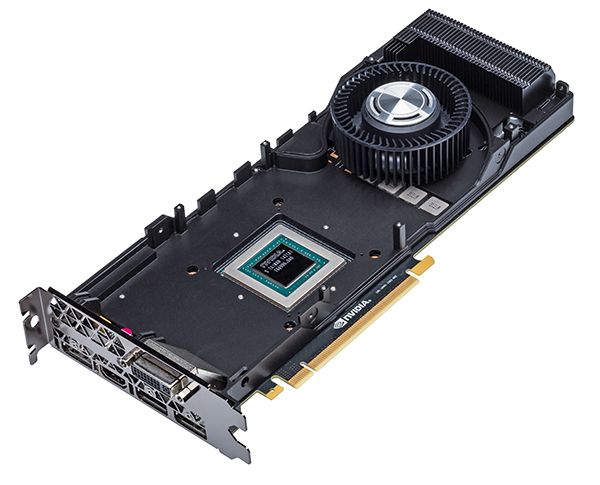
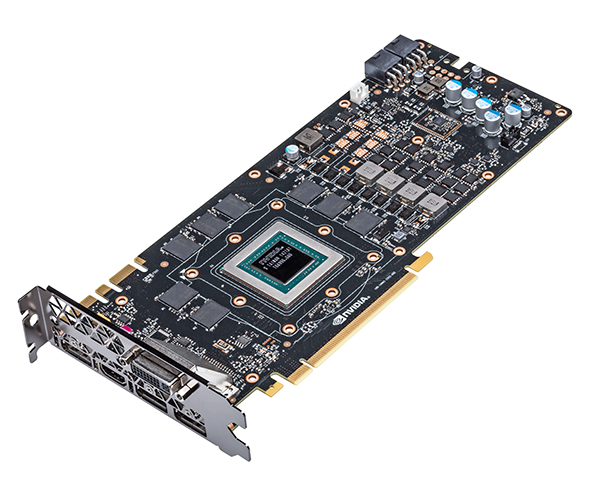
There are no memory modules at the back of the PCB. The GTX 980 has 4GB of memory.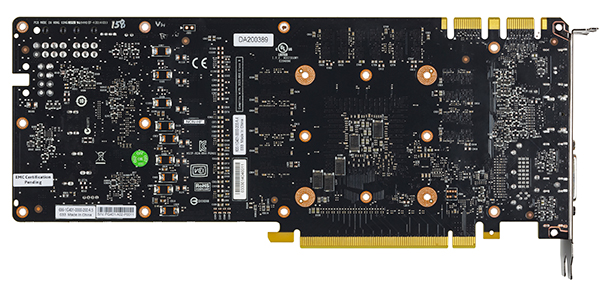
GeForce GTX 980’s backplate is a stylish addition that provides additional protection for the board as well as additional cooling for the back of the PCB and a few components.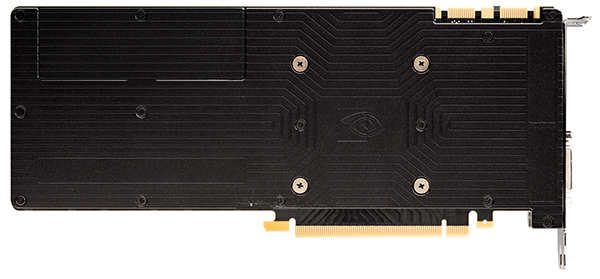
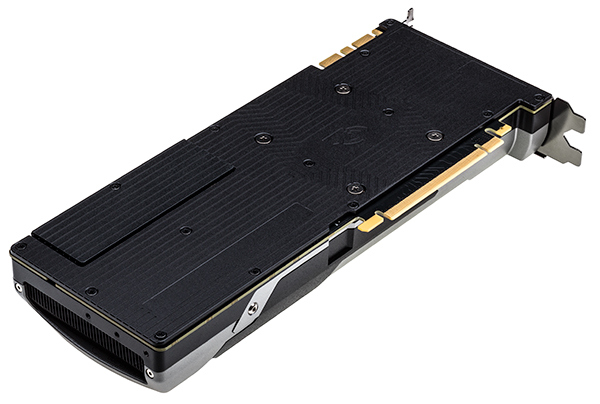
New to the GeForce GTX 980 reference board design is a partially removable backplate. This is necessary for gamers with 3-Way SLI configurations (or users who have their GeForce GTX 980 cards running directly side-by-side without an open slot between them) in order to improve airflow.
While it may seem like a small area, Nvidia’s engineers spent a considerable amount of time studying airflow between boards and determined that this region is critical for feeding air directly into the adjacent fan. Removing this segment of the backplate significantly improves airflow between boards when the cards are directly adjacent to each other, and GeForce GTX 980 users can still enjoy the aesthetic benefits of the backplate.
The GTX 980 is built for multi-GPU action. In addition to standard dual-SLI, it can also be used in triple- and quad-SLI setups, as it features two SLI connectors. The fact that this is a dual-slot design also helps.
As far as video outputs go, few users will have a gripe, since the card features three DisplayPort connectors, an HDMI 2.0 connector (allowing you to run 4K@60Hz), and a dual-link DVI output for a total of five connectors. Up to four can be used at any time.
Three G-SYNC displays can be driven from one GeForce GTX 980 card for instance. Here it’s important to note that when connecting multiple displays between more than one card, you may see performance differences (similar to previous GPUs). For example, a 3-Way SLI configuration with one display connected to each card, versus plugging all three connectors into the same card.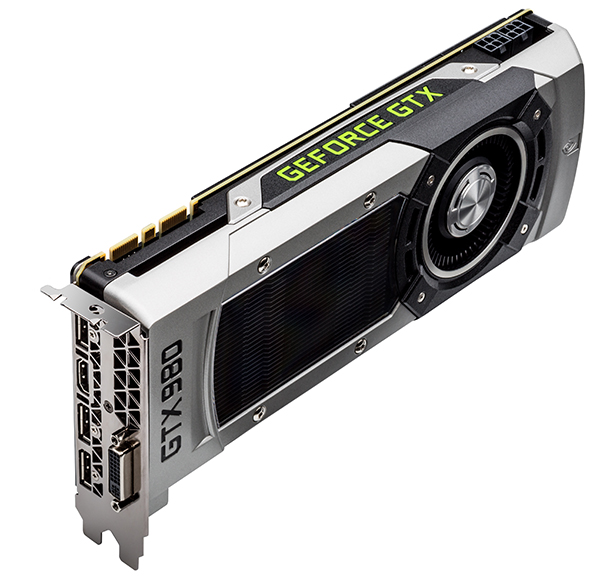
The I/O bracket also doubles as an exhaust vent, helping reduce temperatures within the chassis.



